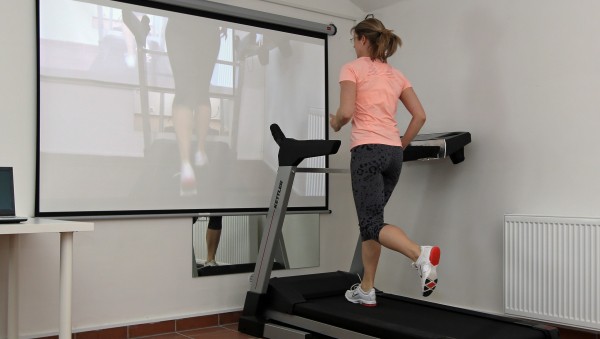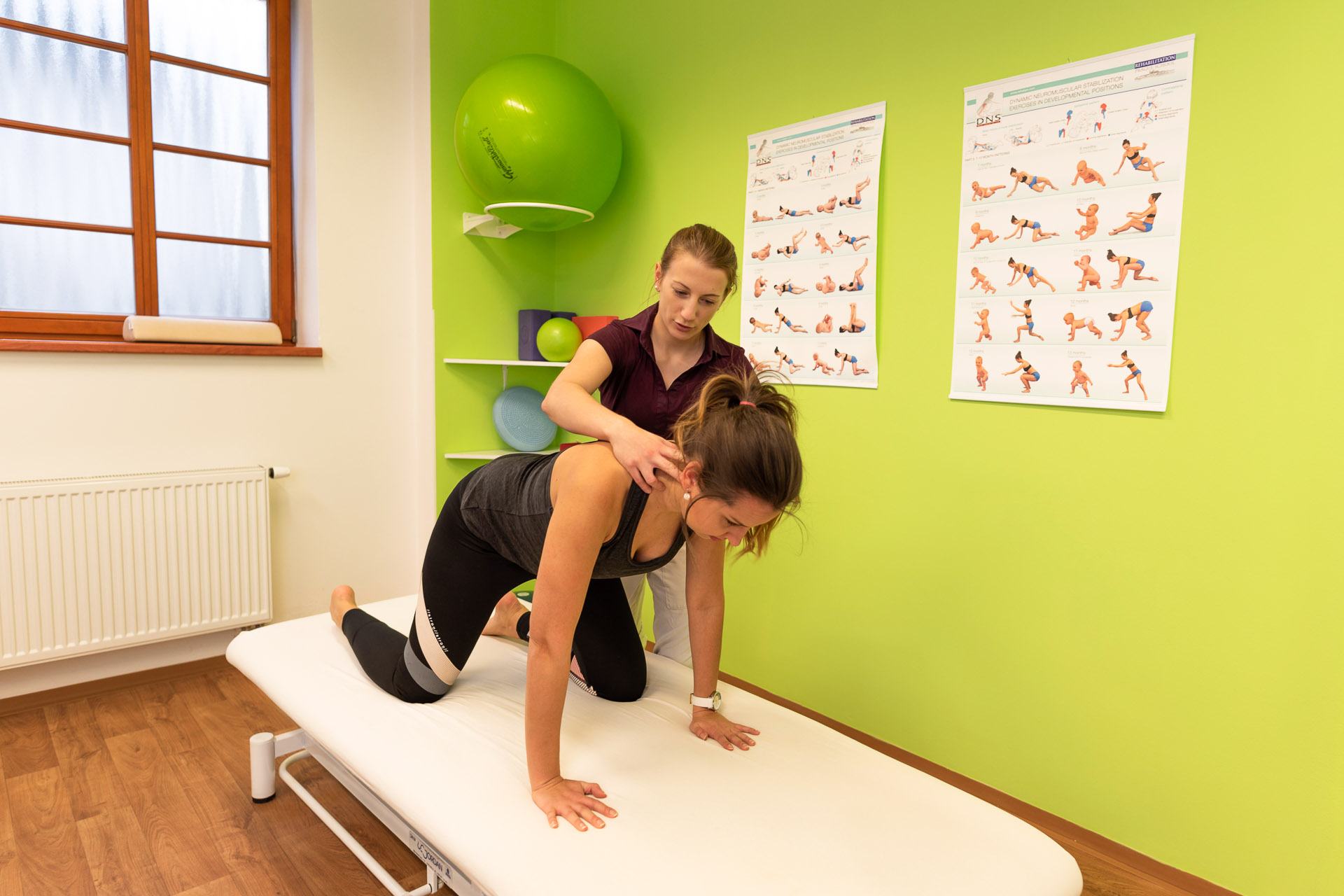Foot diagnostics versus running technique diagnostics
With diagnostics of pedaling or running, a bag has been torn nowadays. More often we can meet with simpler diagnostics of footsteps. It is mainly offered by running shops. The examination takes place by running along the waist, while you are filmed by the camera, respectively only your feet. The filmed picture is then phased and the position of the foot is examined when stepping on. Or the step is examined statically, i.e. you stand on a board that senses the distribution of pressures on the foot. If the ankle sinks when stepping inside, you are recommended so-called pronation shoes, more precisely shoes with pronation control. Such shoes are lined from the inside, so they support your longitudinal arch. The whole thing sounds quite logical, but let’s look at the pitfalls of such an examination.
The position of the foot, meaning the foot, when running depends on the position of the whole body. The stepping is therefore rather the result of how straight and in the axis the spine is and what is the position of the hips and knees. The discovery that the ankle sinks inwards, or that the foot twists when stepping on the outside, is only the tip of the iceberg and has practically no telling value. As a rule, it is also wrong to correct the position of the foot with a specially shaped shoe or insole.
Why is the diagnosis of footsteps short-sighted?
For better understanding, I will give an example. When diagnosing a step, they will detect increased pronation, i.e. a drop in the ankle of both feet inwards and recommend pronation shoes. However, it is not found that the ankle drop occurs because the knee is turned inward. And the knee twists inward because you are not held well by the muscles of the hip and pelvis, and when you step on it, you hang in the hip. If we support the ankle itself, the hip muscles will not force it to work.Although the arch will rise, the position of the shin will change, but the thigh will still turn inward. Therefore, the problem only moves up a level, that is, to the knee, which is rotated as a result of such a correction. So you straighten your ankles, but you throw your knees, which become overloaded as a result of excessive rotation. Such a change can relieve you for a while, for example, in terms of ankle or knee pain, but it usually reappears after a few months. What’s worse, during that time, thanks to the reinforced shoe, the economy and thriftiness of your run will deteriorate.
Coordination of the run as a whole
And now, how can the diagnosis of running and correction of the correct running technique help. When diagnosing/analyzing running, the movement of the whole body is monitored. The parameters that need to be monitored are many. That’s why everyone examines running a little differently and looks at running from their point of view. Otherwise, the running will be examined by the trainer and otherwise by the physiotherapist. The physiotherapist will be more interested in the health side of things. It will focus mainly on asymmetries, on whether certain joints or tendons are overloaded and on the position of the spine. He will be interested in why the ankles fall when running, or why the back or head hurts after running. The coach will look more at the movement of the arms, the dynamics of the legs, the way of stepping and bouncing. Ideal for a complete analysis of running technique is the combination of both approaches.
Examination is one thing, but then how to deal with it is another. You have information, but changing something on your body without feedback is hard. Therefore, it is essential to supplement the diagnosis of running and correction of running, or training in running technique with feedback control. It is possible to change something while running. It is possible to change the step by changing the movement of the arm. By engaging the center of the body, we can change the quality of strengthening and movement of the hips or arms.
With running, you can simply do magic. However, it is necessary to know the neurophysiological connection of muscle work. Although you think that changing the technique is very challenging, it does not have to be so. The important thing is to experience the change and then you can apply it while running outdoors. By adjusting the run, it is even possible to achieve an immediate retreat of difficulties. Pain will therefore become a helper that informs you whether you are loading your body correctly or not.
In our case, in Be Balanced physiotherapy, we try to combine examinations from the perspective of a physiotherapist and a runner when diagnosing running. Our main asset is our knowledge of the work of the body, its laws and connections. Another major benefit of our work is that we will not only describe your run, but we will also teach you how to run correctly. Almost everyone can run, you just need to know how.
We specialize in sports physiotherapy and especially in physiotherapy of runners. More about the mechanisms of running injuries and specific running injuries here:
- pain in the Achilles tendon, ankle, heel, shin
- knee pain when running
- ITB syndrome
- pain in the hips, groin when running and walking
- back pain, cervical spine
- herniation of the disc in the lumbar spine
- poor running efficiency

Mohlo by Vás také zajímat:
- Run Analysis and Diagnostics
- Disc herniation and sports
- How does the body cope with injuries?
- Tennis and golf (javelin) elbow
- Thoracic spine in cycling
- Sports Stress Test
- How to get started with running
- Center of the body, core, get to know each other! Can we really engage him?
- Ultramarathon from the perspective of a physiotherapist
- Leakage of urine during sports, a problem that is not talked about


